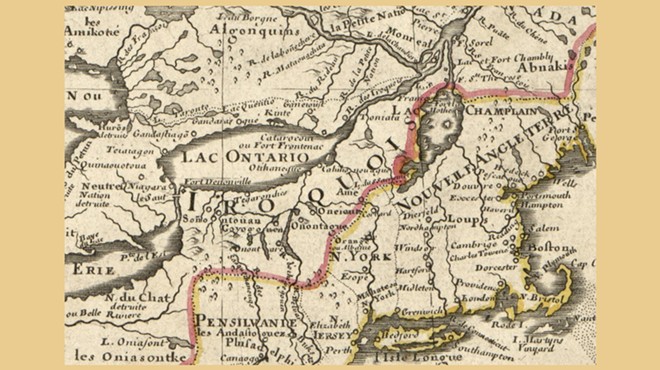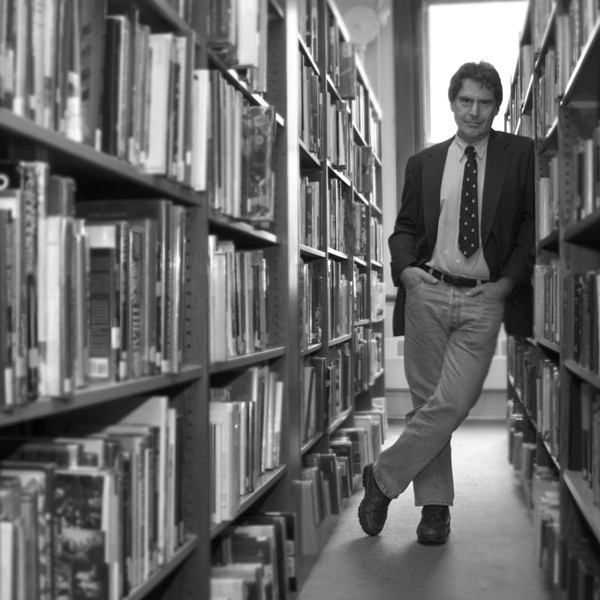“He was asking for perfection,” Mabee says of Father Divine’s mission. “He would say, ‘You people talk too much about material things.’ About possessions, about money, about how you sell this product, and how you make this product. ‘And you should be thinking about eternal things. You should go on to infinity,’ he would say.”
On the plus side, Divine was a pacifist who worked toward uplifting the status of the Negro in America, lobbied for an antilynching bill in Washington, and recognized women as equal to men in the movement. He saw no need for churches and encouraged people to speak directly to their Lord. His communal dinners served as a sacrament.
Divine had a gift for working a crowd. At one of the Divine dinners, Mabee remembers how the man purposely kept people waiting. When he finally appeared, a combination of impatience and anticipation caused the crowd to erupt in wild cheers. “He was very clever in things like this,” Mabee says.
Father Divine exhibited a typical lack of consistency known to evangelists. While telling his supporters to eschew materialism, Divine traveled to his numerous outposts in New York, Long Island, and Ulster County in a blue Rolls Royce. Not requiring much sleep, Divine was known to travel at night and show up at peace settlements unexpectedly.
“He was a strong boss,” Mabee says. “He was really quite autocratic in his behavior sometimes.” Divine maintained a large entourage. Secretaries organized his appointments and scheduled his appearances while lawyers protected him from the many lawsuits that dogged him through his life and challenged his empire.
Many citizens of Ulster County bristled at the lifestyle of these new neighbors, Mabee says. They found the no-sex policy “unnatural,” and saw their desegregation campaign as a threat to civilization (read: Euro-American white supremacy).
Detractors did not mince words; a New Paltz town father addressed Father Divine’s followers in a 1936 letter to the local newspaper. The message read, in part, “We just don’t want you here. You’re black, you’re ignorant, your money comes from mysterious sources that we don’t understand. You’re following a hypnotic figure.”
Eventually, a few buildings owned by Divine acolytes were burned down.
Granted, there was an odd bent to Divine’s utopia, Mabee says. Young women were ordered to wear navy blue shirts and dark red jackets adorned with a white “V” (for virtue) over their hearts.
“Among other things, he said he wasn’t claiming to be God, but his followers called him God,” Mabee says. But he dismisses the notion that the Peace Mission movement was a cult. “He didn’t have members, he had followers, and followers can be enthusiastic or not enthusiastic.”
At one point, Divine planned to establish his international headquarters in Ulster County. But that did not happen. The Divine empire would soon suffer several setbacks.
In the tradition of Shakespearean tragedies, the most potent act of betrayal came from within. A follower known as Faithful Mary (aka Mary Rozier), a former streetwalker who had been redeemed, operated a hotel in High Falls. In 1937, she declared Divine a charlatan. She wrote a memoir titled God: He’s Just a Natural Man (1937, Universal Light Publishing Co.), which claimed Divine was a sex fiend who made unwanted advances toward her. Citing his willingness to be called “God” by adherents, Mary planned to set up a competing egalitarian movement.
Reporters dubbed the irate woman “Faithless Mary” and happily spread her allegations. These charges had a negative impact on the Peace Mission Movement.
Mary’s movement did not gather supporters, Mabee says, which prompted her decision to return to Father Divine, hat in hand. After she agreed to renounce her accusations before Divine supporters in a large Harlem hall, “Father Divine accepted her back in the movement,” Mabee says, “but refused to give her any considerable responsibility.” Mary eventually left for California and reverted back to her dissolute ways.
In the 1940s, following the death of his first wife, known as Mother Divine, Divine married Canadian Edna Rose Ritchings. “He called her the reincarnation of the Virgin Mary,” Mabee says. Despite their leader’s commitment to desegregation, many followers deplored his marriage to a Caucasian and departed.
















